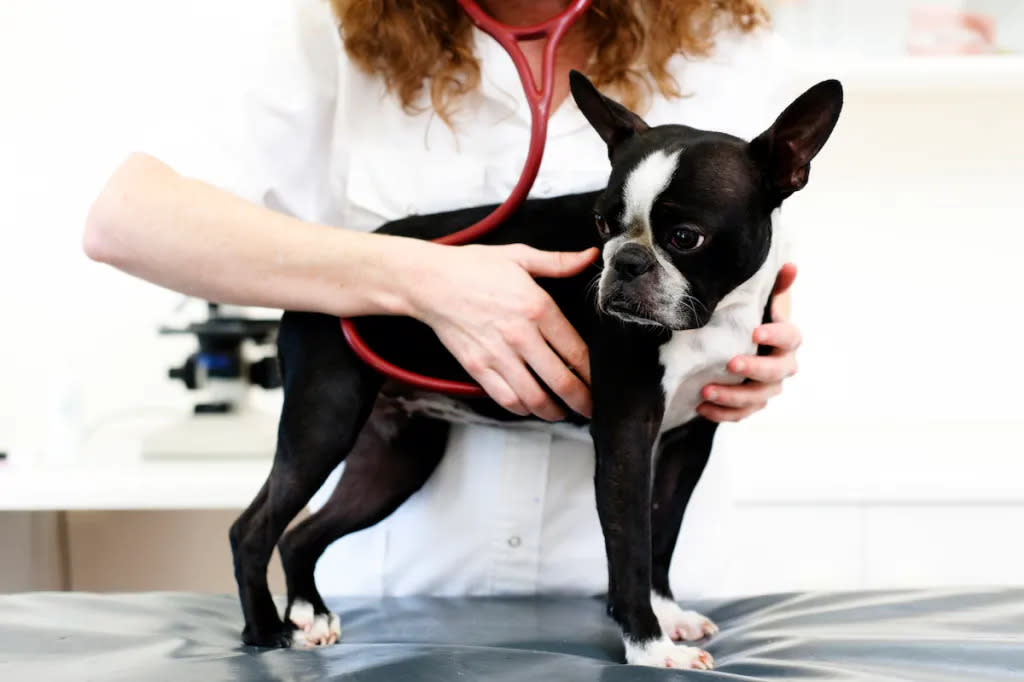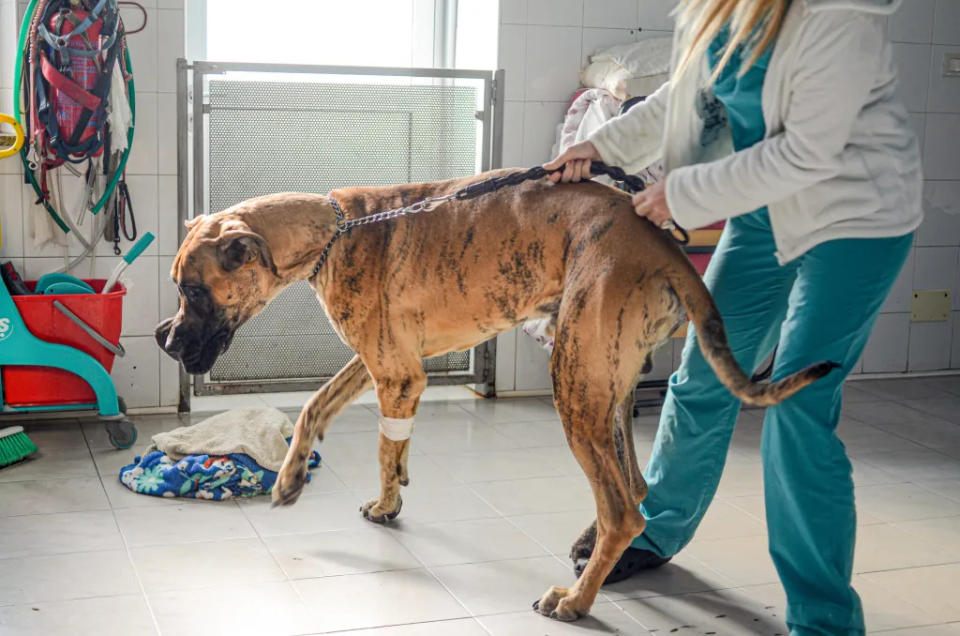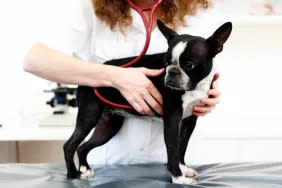Diskospondylitis in Dogs: Symptoms, Causes, & Treatments

Diskospondylitis in dogs is a bacterial infection that causes the disks between vertebrae to become inflamed. Technically, the condition is also referred to as discospondylitis.
Usually, the condition is caused by a fungal or bacterial infection. Additionally, older dogs and canines with weakened immune systems are most susceptible to it. Generally, the disorder causes back pain. However, neurological problems can also happen if the infection spreads to a canine’s spinal cord.
If you see signs that your dog might be suffering from this condition, then you must consult your veterinarian for a proper diagnosis and course of treatment. Here’s what you should know about the symptoms, causes, and treatments of diskospondylitis in dogs.
Symptoms of diskospondylitis in dogs
The condition in dogs can result in a wide range of symptoms. Generally, the condition affects a dog’s back.
For example, some of the most common symptoms of diskospondylitis include:
Back pain
Stomach pain
Lameness
Shaking
Fever
Neck problems
Hunched back
Weight loss
Weakness
Loss of appetite
Acting uncoordinated
Causes of diskospondylitis in dogs

The cause of discospondylitis is an infection. Usually, the infection is fungal or bacterial.
For instance, some of the infections that can cause diskospondylitis include:
Clostridium perfringens
Escherichia coli
Scedosporium apiospermum
Brucella canis
Paecilomyces variotii
Staphylococcus intermedius
Aspergillus terreus
Paecilomyces variotii
Scedosporium apiospermum
Streptococcus spp
Aspergillus terreus
Additionally, the following factors and circumstances can also cause the disorder:
Urinary tract infections
Physical traumas
Dental problems
Wounds that become contaminated
Abscesses
Finally, certain larger breeds of dog seem to be most predisposed to diskospondylitis. For example, some of those breeds include:
Treatments for the condition in dogs
Firstly, if you think that your dog might be developing discospondylitis, your veterinarian will want to carry out a full physical examination of your canine. Secondly, your vet will ask about your dog’s full medical history. This will include any breed-specific problems.
Generally, blood tests can be used to detect any infections. Additionally, a spinal tap can be used to analyze your pup’s cerebrospinal fluid. Usually, the results of the fluid test can pinpoint the precise infection that is causing the condition. Also, X-rays can be used to figure out how severe the case of diskospondylitis is.
Usually, medication is prescribed to fight the infection. For example, bacterial infections will be treated with antibiotics while fungal infections will benefit from antifungal medication. Also, anti-inflammatory medication can help with any pain issues.
Unfortunately, very extreme cases of diskospondylitis will require a surgery. Specifically, this process will reduce any compression being placed on your canine’s spinal cord.
Finally, dogs recovering from this condition will need to keep up regular vet visits. This is to make sure any symptoms do not return.
Neosporosis in Dogs: Symptoms, Causes, & Treatments
Hyperuricosuria in Dogs: Symptoms, Causes, & Treatments
Thiamine Deficiency in Dogs: Symptoms, Causes, & Treatments
Diskospondylitis in Dogs: Symptoms, Causes, & Treatments
Patellar Luxation in Dogs: Symptoms, Causes, & Treatments
Lundehund Syndrome in Dogs: Symptoms, Causes, & Treatments
Hemivertebrae in Dogs: Symptoms, Causes, & Treatments
The post Diskospondylitis in Dogs: Symptoms, Causes, & Treatments appeared first on DogTime.








